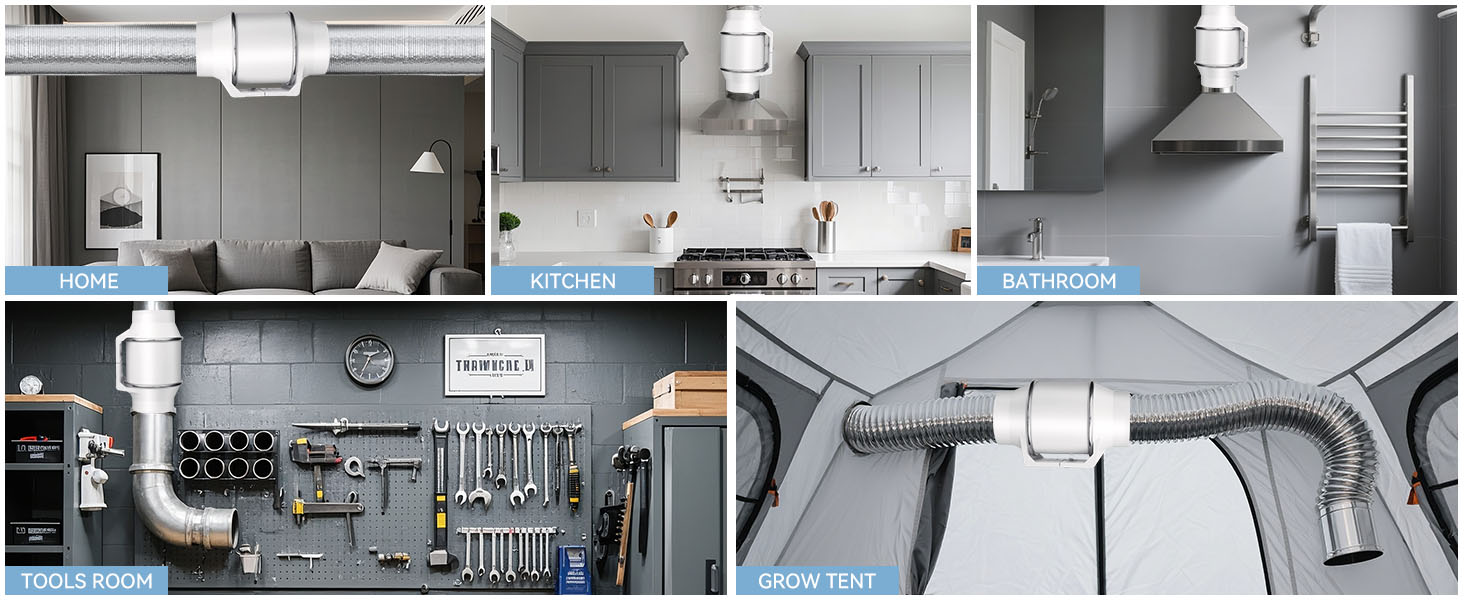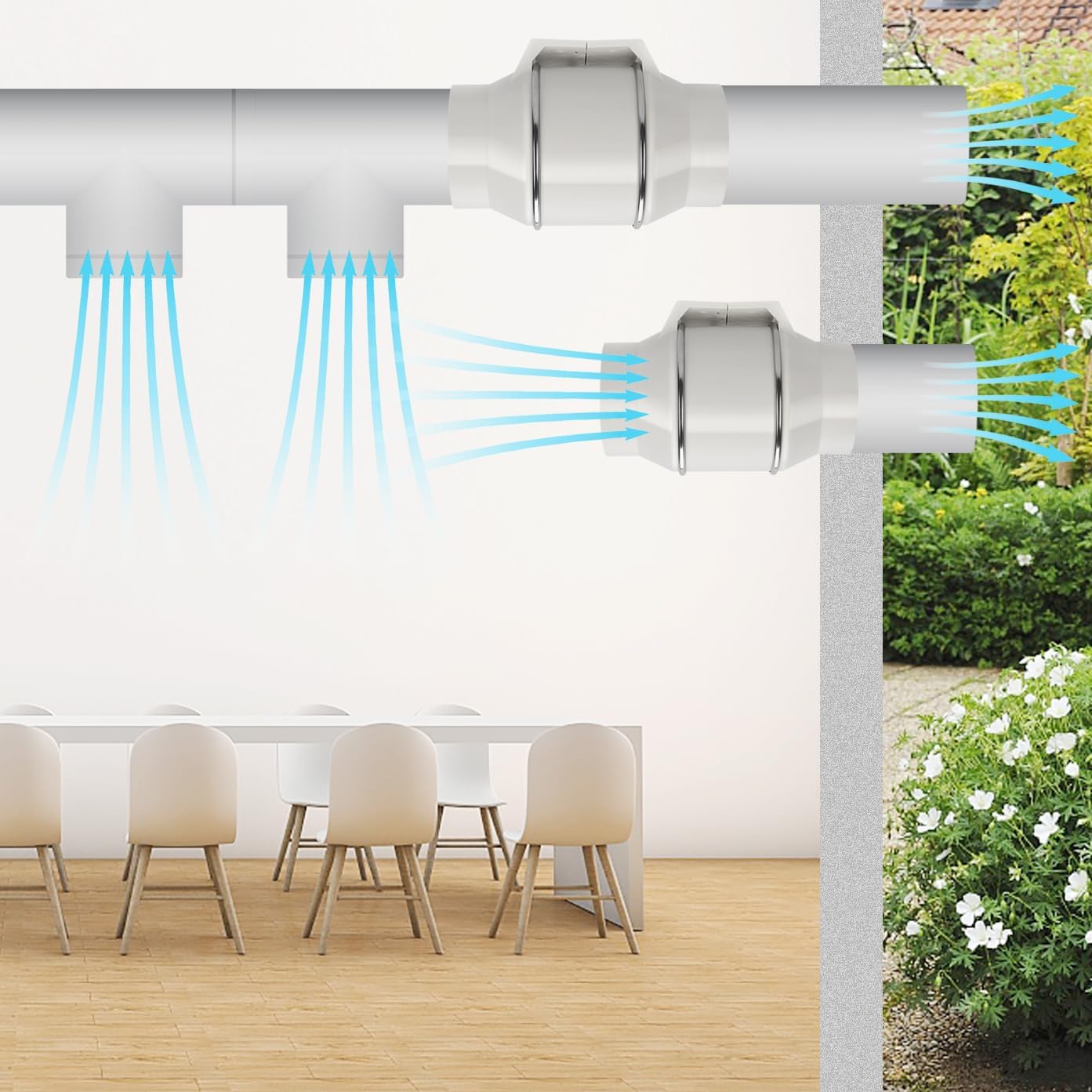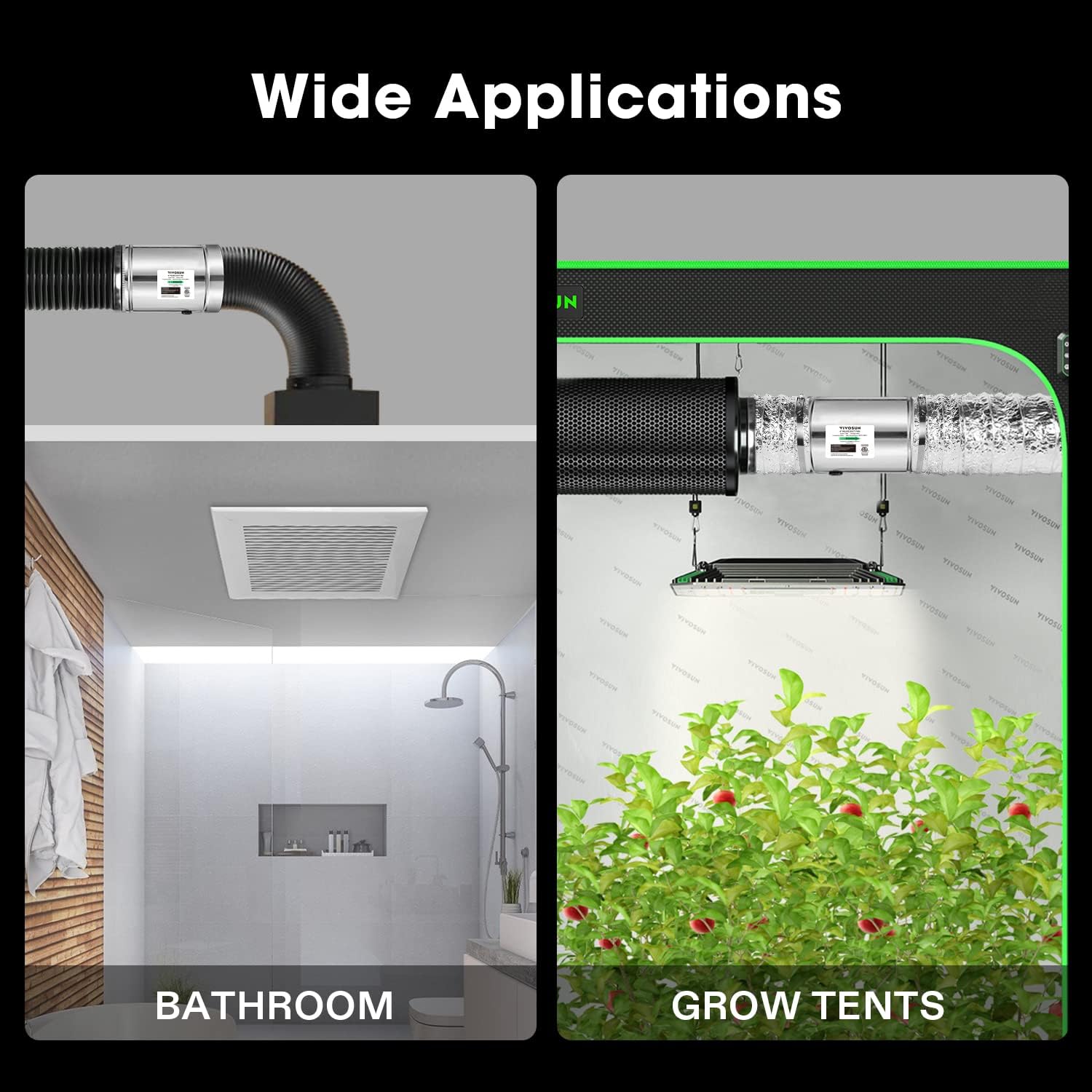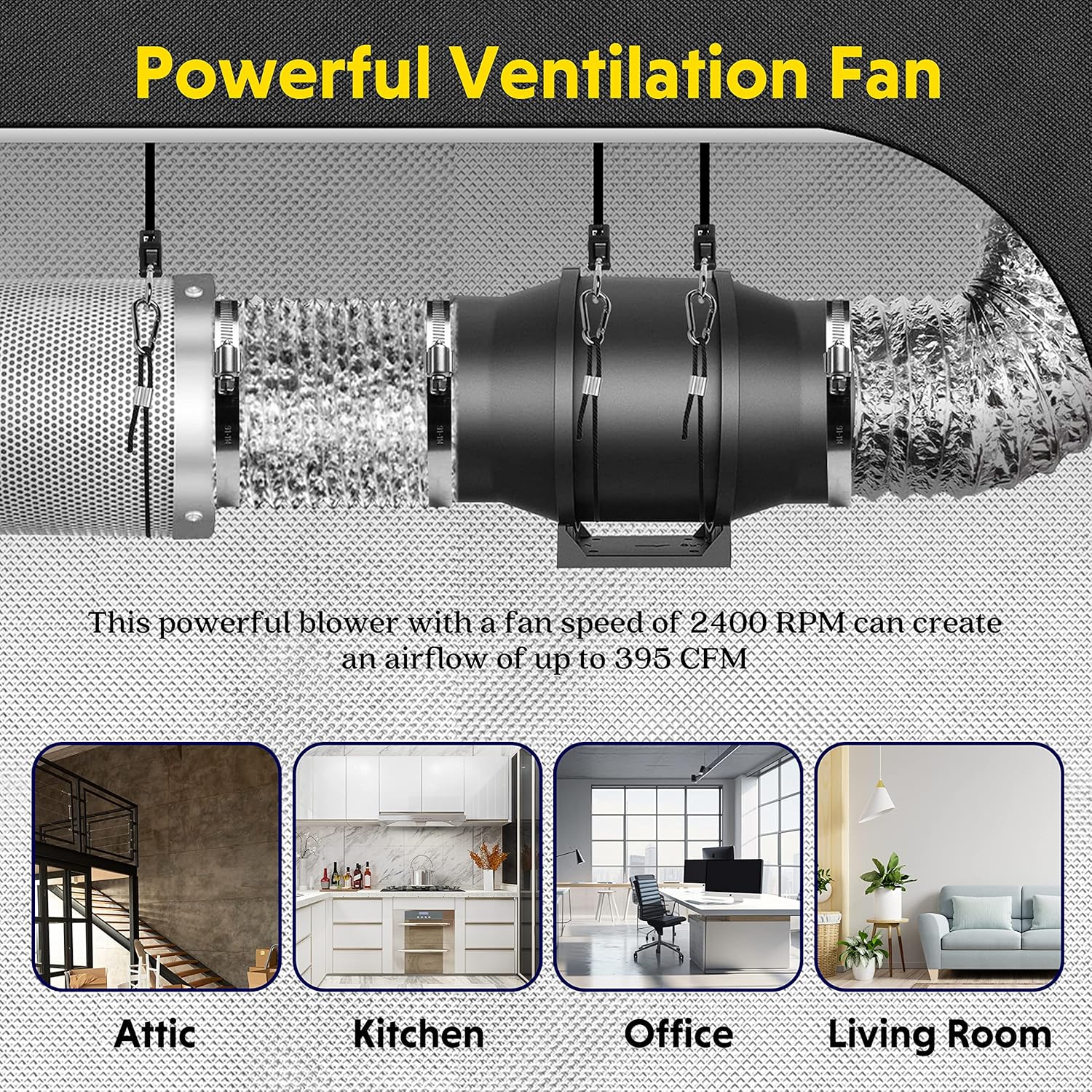A comprehensive guide to your inline fan
Proper ventilation is essential to maintain a healthy and comfortable indoor environment, whether in your home, office or industrial space. An effective solution for enhancing air circulation and quality is a versatile inline tube fan. These powerful but often invisible devices play an important role in moving the air through the pipes, ensuring fresh air intake and stale air exhaust. This guide will guide you through understanding, selecting, installing and maintaining inline fans to optimize ventilation systems.
Learn the basics: What is an inline pipe fan?

As the name suggests, an inline fan is a fan designed to be installed directly in a pipe. Unlike traditional fans that may be installed on walls or ceilings, these fans themselves are integrated into the ductwork system. Their main function is to increase the airflow in the air duct running that is too long or curved too much to move effectively on its own. There are various types, including an effective centrifugal inline fan, which uses a rotating impeller to suck and drain air at a 90-degree angle, providing a strong, consistent airflow. Our inline fan fans are made of high-quality materials, with a robust design of durability and life, with features like aerodynamic design of five-blade impellers to maximize airflow for maximum noise.
Choose the perfect inline tube fan for your needs
Choosing a right inner tube fan involves considering several key factors. First, the required airflow is determined, usually measured in cubic feet per minute (CFM). For larger spaces or applications that require a large amount of air exchange, high CFM inline fans are required. Secondly, consider the noise level. If you want to install a fan near a living area or work area, then choosing a quiet inline fan is essential. Our models are designed for whispering operations to ensure your space remains quiet. Other considerations include compatibility of pipe size, energy efficiency – our fans adopt state-of-the-art energy-saving technologies as well as specific applications, whether residential, commercial or industrial. Materials used in construction, such as durable ABS plastic or high-quality metal, also contribute to the life and performance of the fan.
Step-by-step guide to installing an inline tube fan
Installing an inline tube fan can significantly improve your ventilation. Here is a general guide:
1. Safety first: Be sure to disconnect the existing ventilation system of the circuit breaker before starting any work.
2. Select location: Select the direct part of the pipeline that can be used for installation and future maintenance. Make sure there is enough fan unit space.
3. Cutting pipe: Measure the length of the fan housing. Carefully mark and cut the section of the pipe that will install the fan. Use tools that suit your pipe type (for example, tin shears for metal pipes).
4. Install the fan: Insert the inline fan into the cutting end of the pipe. Like us, most fans come with reinforced metal straps or mounting brackets to securely hold them in place. Make sure to correctly determine the direction of the fan for the desired airflow direction (usually indicated by the arrows on the fan housing).
5. Safe connection: Use pipe clamps or high-quality tape to seal the connection between the fan housing and the pipes on both sides. Make sure the seal is sealed to prevent leakage and maintain efficiency.
6. Wire: This is the key step. Our inline fan fans are equipped with a central junction box and a prominent power cable for easy connection. Follow the manufacturer's wiring diagram accurately. If you feel uncomfortable with electrical work, it is highly recommended that you hire a qualified electrician.
7. Test system: After installation, all connections are safe, restore the power and test the fan. Check for proper airflow and any abnormal noise or vibration.
Many modern inline fan fans are designed for easy installation, with features like integrated junction boxes and stable mounting brackets to minimize vibration.
Multifunctional application: Inline tube fan glows
Inline air duct fans have a wide range of uses. They are a common component in many HVAC inline fan systems that can improve central air conditioning or heat to remote rooms. As inline exhaust fans, they are very effective in removing moisture, odors and contaminants from specific areas. Common applications include the kitchen (eliminate cooking smells), the bathroom (beating humidity), the basement (resolving damp, stale air) and the workshop. For greater demand, commercial inline tube fans can improve air quality in offices, cafeterias and retail spaces. In addition, a robust industrial interior pipe fan model is critical for ventilation in factories, warehouses, laboratories and repositories, helping to control air pollutants and maintain a safe working environment.
Maintain your inline fan fans to maintain durable performance
To ensure that your inline fan fan operates effectively over the next few years, regular maintenance is key. Check regularly for the fan to accumulate dust or debris on the blades and shells, as this can reduce airflow and efficiency. According to the manufacturer's instructions, carefully clean the fan blades and internal components to ensure that the power is disconnected before cleaning. Check that the electrical connection is tight and ensure that the mounting bracket is safe. Regular inspections will help you spot any potential problems early, extending the life of the fan and ensuring continuous, optimal air quality.
Why choose Ningbo Aoshun Electrical Co., Ltd. Carry out ventilation solutions?
At Ningbo Aoshun Electrical Co., Ltd., we pride ourselves on our flexibility in purchasing, designing and producing innovative electrical products, including a wide range of inline duct fans. Our commitment to quality means that our fans are not only powerful and effective in efficiency, but are also designed with quiet operation and easy installation considerations. We provide a one-stop buying experience for all your electrical needs and cater to wholesalers, buyers and retail customers. With our extensive experience in ventilation fans, exhaust fans, centrifugal fans and more, we ensure you receive products that meet your specific requirements. Our strategic logistics investments enable us to provide excellent service worldwide and provide marine, air, express and rail options. When you choose us, you will choose a partner that is reliable, innovative and committed to customer satisfaction.
Conclusion: The right-hand straight fan fan is easier to breathe
Inline fans are a powerful tool to improve air quality and comfort in any space. By understanding its capabilities, choosing the right model for your needs (whether you prioritize a quiet inline fan for your home, or a high CFM inline fan for industrial use), and ensuring proper installation and maintenance, you can significantly improve the environment. For high-quality ventilation solutions, including advanced inline tube fans designed for performance and durability, consider exploring Ningbo Aoshun Electrical Co., Ltd.’s products. We are here to help you achieve the best air circulation and a healthier living or working space.





